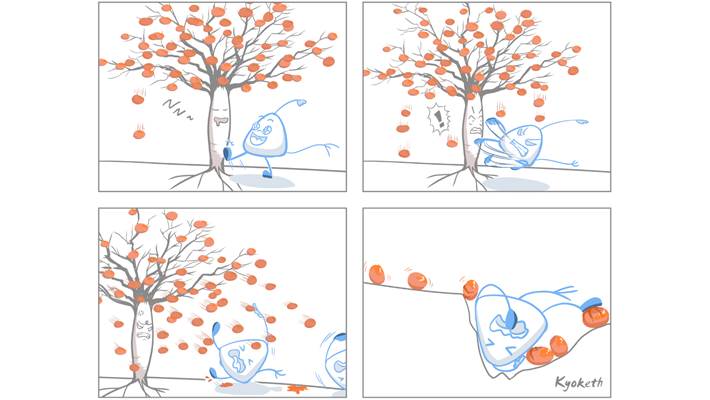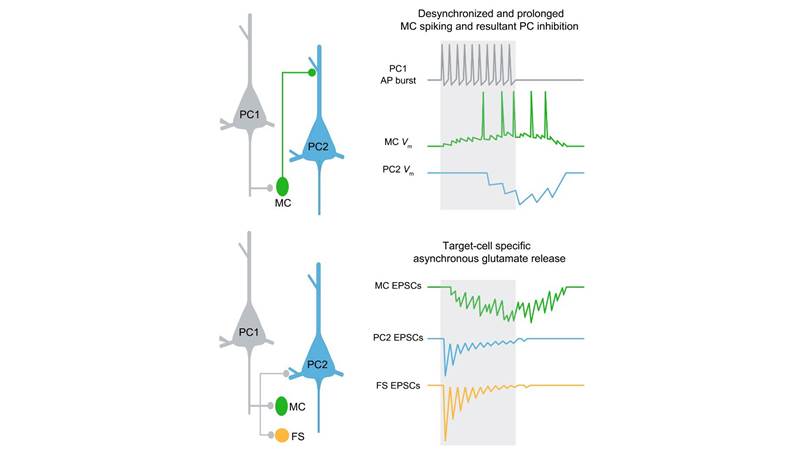
Cortical inhibition is crucial for dynamic excitation-inhibition balance and information processing in the neocortex. The temporal control of cortical inhibition determined by distinct microcircuit motifs has been extensively studied. The underlying mechanism, however, remains unclear.
In this study, Denget al. performed dual whole-cell recordings from pyramidal cells (PCs) and nearby inhibitory interneurons in layer 5 of rodent neocortical slices (Sprague Dawley rats and mice, postnatal 15-20 days). They found that PC output synapses onto Martinotti cells (MCs) have two release modes: synchronous and asynchronous release. Unlike synchronous release, asynchronous release (AR) is not tightly coupled to individual presynaptic APs. The delayed and long-lasting AR of glutamate prolongs and desynchronizes the firing in MCs, causing prolonged and imprecise inhibition in neighboring PCs. AR is much stronger at PC-MC synapses as compared with those onto fast-spiking cells and other PCs.
In addition, AR is also dependent on PC subtypes, with crossed-corticostriatal PCs producing the strongest AR as compared to corticopontine and commissural PCs. They also examined the cell types of postsynaptic MCs. Recent studies reveal that MCs can be further subdivided into two subgroups with fanning-out or T-shaped axon arborizations. They found no significant difference in AR strength between these two MC subgroups. However, the AR strength of T-shaped (but not fanning-out) MCs show a strong negative correlation with MC input resistance.
Futher experiments revealed that the AR strength is dependent on presynaptic Ca2+. High concentration of intracellular EGTA could block the AR sufficiently. Knocking out synaptotagmin-7 (Syt7), a slow Ca2+sensor in presynaptic terminals, substantially reduces AR strength, delays and decreases the recurrent inhibition.
In conclusion, their results provide the first piece of evidence showing the effect of a cell-type specific glutamate AR on the operation of microcircuits mediating the slow recurrent inhibition, an important mechanism for controlling the timing and size of cortical inhibition.These findings would promote our understanding about the dynamic excitation-inhibition balance and information processing in the neocortex.

Top, the regulation of glutamate AR in MC-mediated slow recurrent inhibition in neocortex. Imprecise and long-lasting MC firing (green) as well as desynchronized and prolonged slow recurrent inhibition (blue). Bottom, target-cell specific AR at PC output synapses.
Original article:https://www.cell.com/neuron/fulltext/S0896-6273(19)30933-X